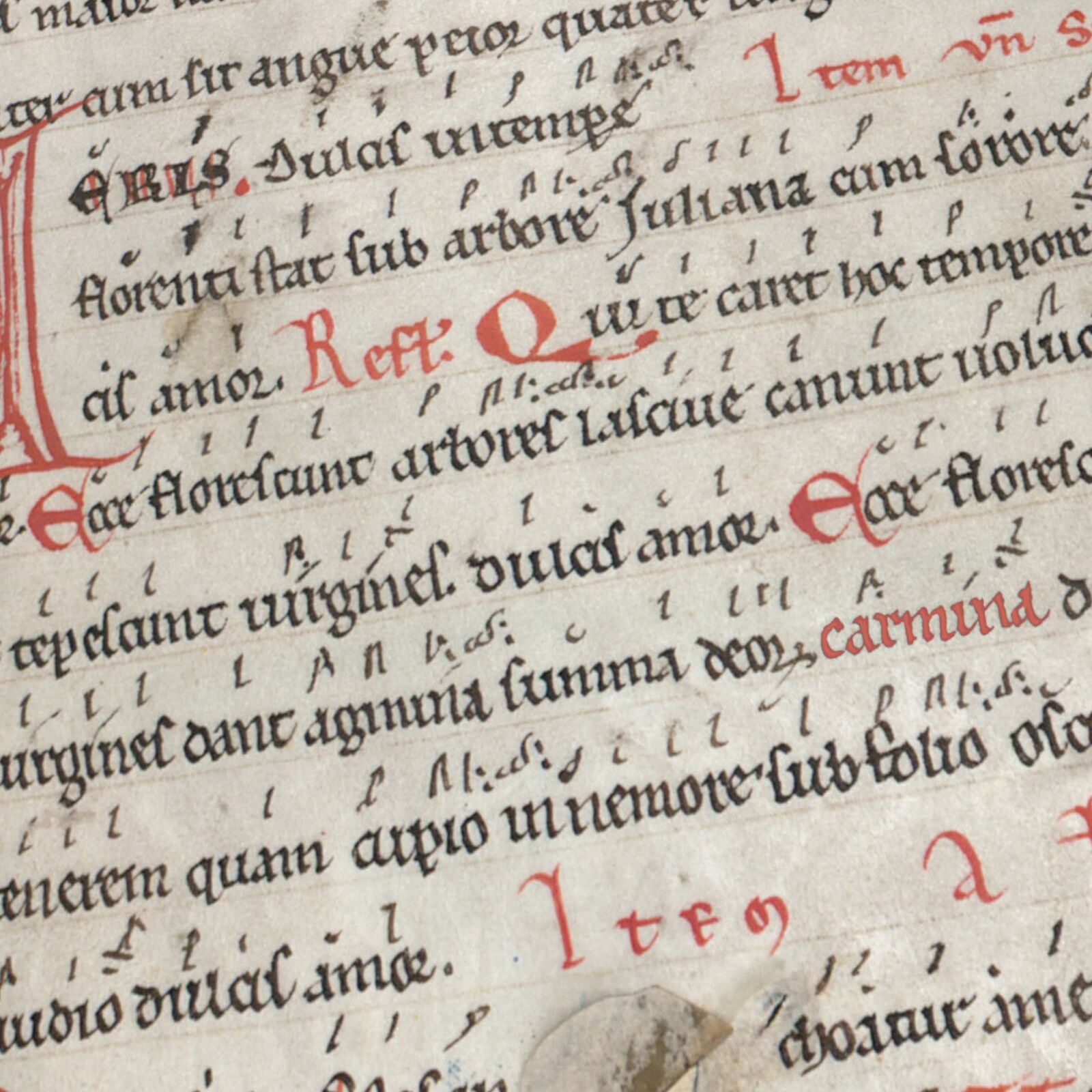Basel, Schola Cantorum Basiliensis / FHNW, 20-22 November 2025
Since its rediscovery in 1803, the Codex Buranus (Munich, Bayerische Staatsbibliothek, Clm 4660-4660a) has continued to captivate scholarly audiences, becoming one of the most studied manuscripts of the Middle Ages. It stands at a cultural crossroad of Latin and Germanic linguistic tradition, combining the richest surviving anthology of Latin lyric poetry, an invaluable repository of liturgical drama, and the oldest source of Minnesang.
Despite extensive research on the literary content of the Codex Buranus, much remains to be explored, particularly concerning its musical aspects. These present significant challenges for scholars and performers. Of the 254 items within the manuscript, only around sixty are notated using adiastematic neumes. They thus provide melodic contours but do not precise pitches. Parallel sources with staff notation do exist for some pieces, yet they may not accurately reflect the particularities of the melodies as they appear in this Codex. As a result, a long-standing perception has arisen which considers the Codex’s melodies to be largely inaccessible or "untranslatable" within conventional musicological frameworks. This, in turn, led to a relative analytical neglect of the music compared to that of the texts it sets.
The conference “Carmina Burana: From Source to Sound” is organised as part of the project Carmina Burana Online, funded by the Swiss National Science Foundation and hosted at the Schola Cantorum Basiliensis / FHNW. It seeks to promote innovative methodologies and foster interdisciplinary approaches to explore this iconic manuscript in new ways, especially for interpreting and reconstructing its melodies. The conference aims to foster new insights into the kind of song repertoire transmitted by the Codex Buranus and other comparable sources, paving the way for a more comprehensive understanding of its musical heritage and its place within medieval European culture.
We welcome proposals that engage with topics such as but not limited to:
- New methodologies for accessing the musical content of the Carmina Burana and Latin or multilingual song repertoires more widely.
- Computational approaches to neumatic notation and digital encoding (TEI/MEI) for medieval music manuscripts.
- The historical and cultural context of the Codex, with attention to its multilingual and multicultural setting.
- The role of the Codex Buranus in the broader landscape of medieval performance practice, lyric traditions, and liturgical drama
- Codicological, palaeographical and iconographical aspects of the main Codex (Clm 4660) and the Fragmenta Burana (Clm 4660a)
- New insights on how material and textual aspects interact within the Codex Buranus
- Practical and theoretical challenges of editing, interpreting and performing the music of the Carmina Burana.
Submission Guidelines
Individual papers (typically 30’ + 10’ for discussion), with or without a performance practice aspect, as well as alternative formats are welcome.
The conference will include performances by Schola students, and we can offer taylor-made, live sound examples if required by the speakers.
Proposals (in English or German) should include:
- Full name(s) of the speaker(s)
- Institutional affiliation(s)
- Email address(es)
- Paper title(s) and abstract(s) (300 words / paper)
Proposals should be submitted to: christelle.cazaux@fhnw.ch. They will be anonymized before being evaluated by the Program Committee (made up of the team and partners of the project).
Deadline for submission: 15 January 2025
Notification of acceptance: End of February 2025.
Please send any questions to christelle.cazaux@fhnw.ch
